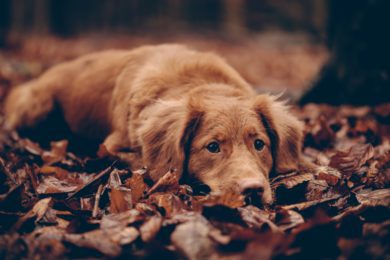Like pets, plants are a great way to brighten any home. However, some of our favorite plants, no matter how nice looking they are, can pose a huge risk to the four-legged friends in our families. So, whether you have a green thumb (paw?) or plants tend to wither and die in your care (hey, it happens), read on to learn which plants and symptoms to watch out for.

These beauties are a popular choice for many homes and gardens during springtime. However, lilies can be highly toxic to pets, especially cats. Even small amounts of any part of a lily plant, such as pollen grains, can cause acute kidney failure in cats.
If you suspect your pet has ingested lilies, you should look for symptoms such as lethargy, increased thirst and urination, dehydration, nausea, vomiting and excess drooling.
While not all types of lilies are toxic to dogs, lily toxicity boils down to the type and amount ingested. While cats are more susceptible to toxicity, dogs can usually tolerate small amounts. However, certain lilies, such as Lily of the Valley, Peace Lilies, and Cala Lillies, are toxic to dogs.

Aloe Vera plants might come in handy for us humans who are seeking a bit of relief from a pesky sunburn, but they can do more harm than good for our furry pals.
In large quantities, Aloe Vera can be harmful to pets when ingested. The plant contains saponin, which can cause gastrointestinal upset, such as vomiting and diarrhea, and can lead to dehydration if left untreated. In addition, the latex present in Aloe Vera can also cause digestive issues for pets.

A popular houseplant known for its ability to purify the air, the Pothos plant can pose a risk to pets if eaten.
Although the toxicity level of this plant is generally not severe, it can cause oral irritation, swelling, and pain in your pets if they chew or swallow it. The microscopic needles in the plant can cause damage to the mouth, throat, and digestive system, leading to pain and swelling.
If your furry friends ingest these plants, they may experience symptoms such as drooling, difficulty swallowing, vomiting, and diarrhea. In severe cases, pets may even find it hard to breathe.

Oleander is a popular ornamental plant found in many gardens and landscapes, and while it looks pretty, it can do significant damage to pets (and even us humans!).
All parts of this plant are considered toxic and contain cardiac glycosides, which can affect the heart muscle. If ingested, Oleander can cause vomiting, diarrhea, drooling, tremors, seizures, and, in severe cases, cardiac failure and death.

The Sago Palm might be pretty, but it can be deadly for pets. The ASPCA Animal Poison Control Center says they receive thousands of calls yearly regarding pets who have ingested this plant.
Every part of the plant, including its fronds, stems, and seeds, contains toxins that can cause liver damage, blood clotting disorders and even death in pets. Keeping this plant away from your pets is crucial, as even the smallest amount can be lethal.
The symptoms of Sago Palm poisoning can appear as early as 15 minutes after ingestion. In some cases, they may not appear for several hours. Symptoms can include vomiting, diarrhea, lethargy, loss of appetite, abdominal pain, and jaundice. In severe cases, pets can experience seizures, coma or even death.
While plants can be a great addition to any home, it is important to be aware of their potential risks to our furry friends as many common houseplants and outdoor plants can be toxic to pets.Us humans are responsible for keeping our pets safe by being aware of what plants are harmful and taking necessary precautions to prevent accidental ingestion. You can explore a variety of toxic plants by clicking here.
If you believe your pet has ingested a poisonous substance, contact your veterinarian or a 24-hour emergency service such as the Pet Poison Helpline.


